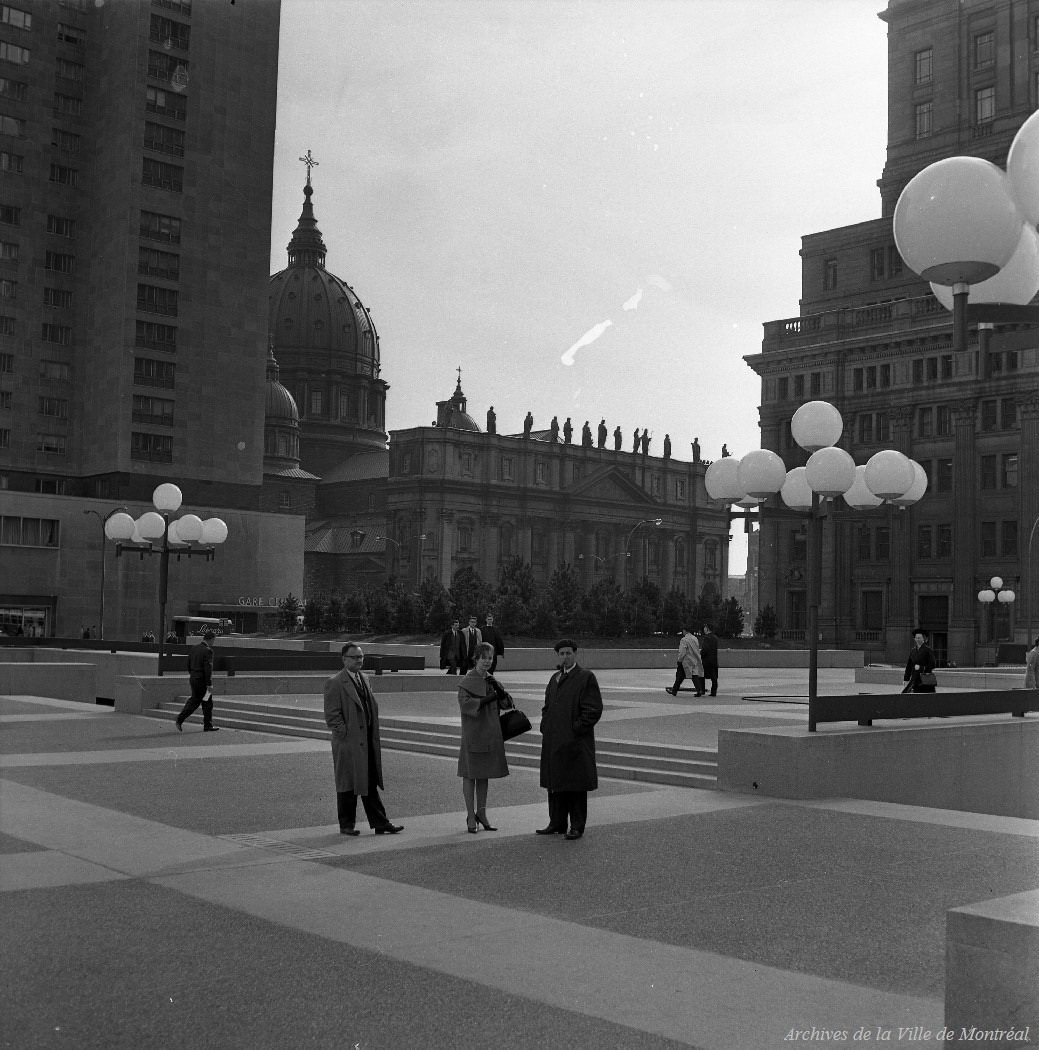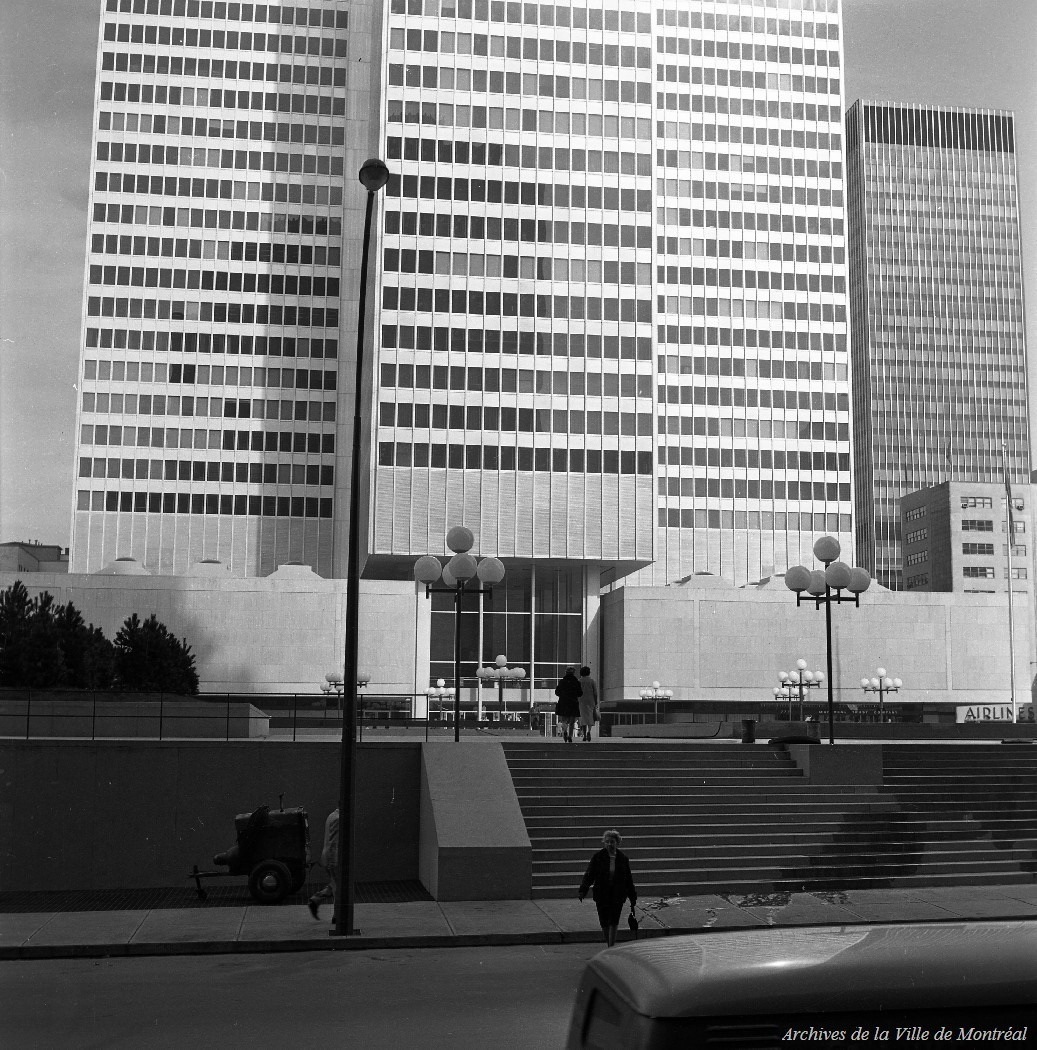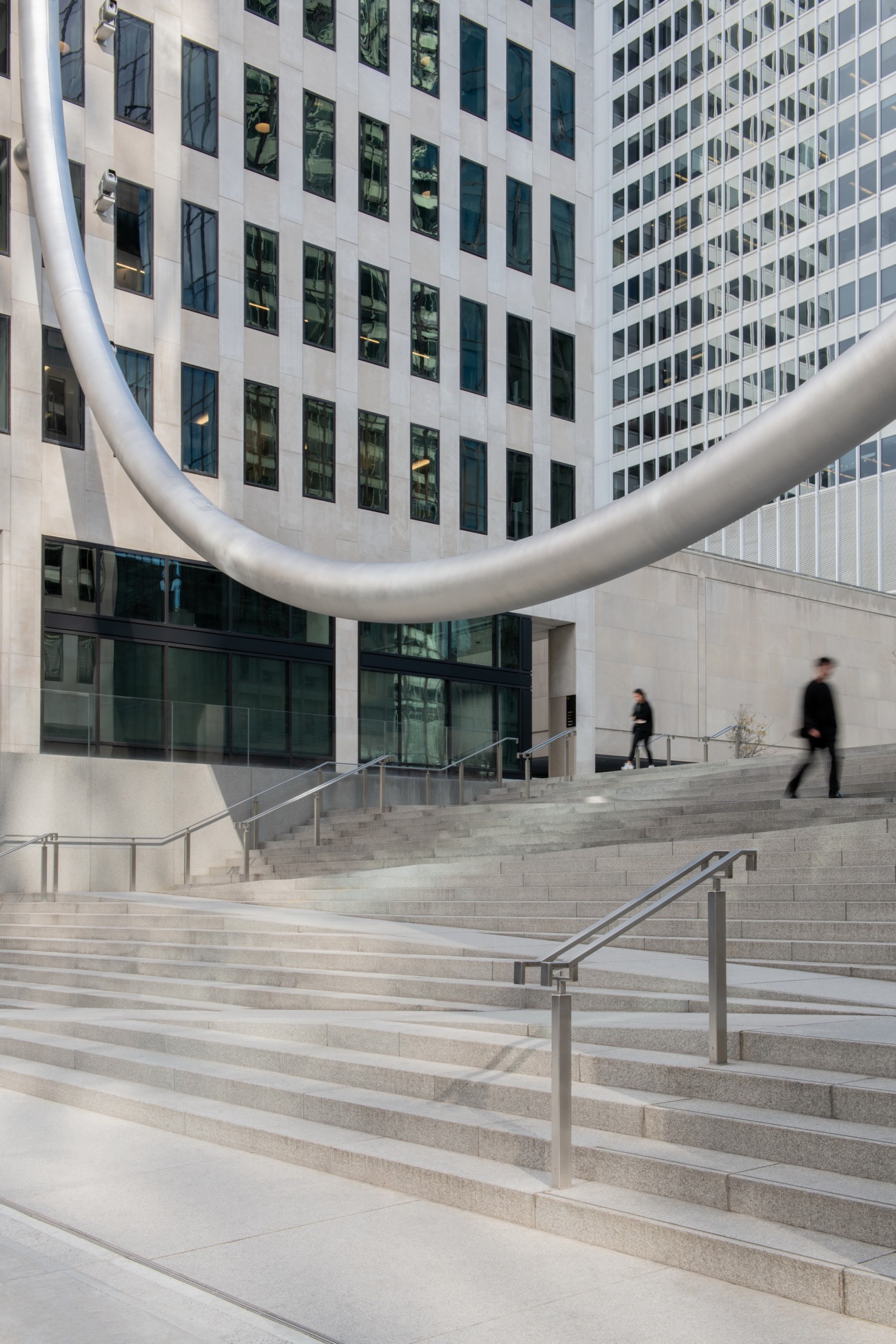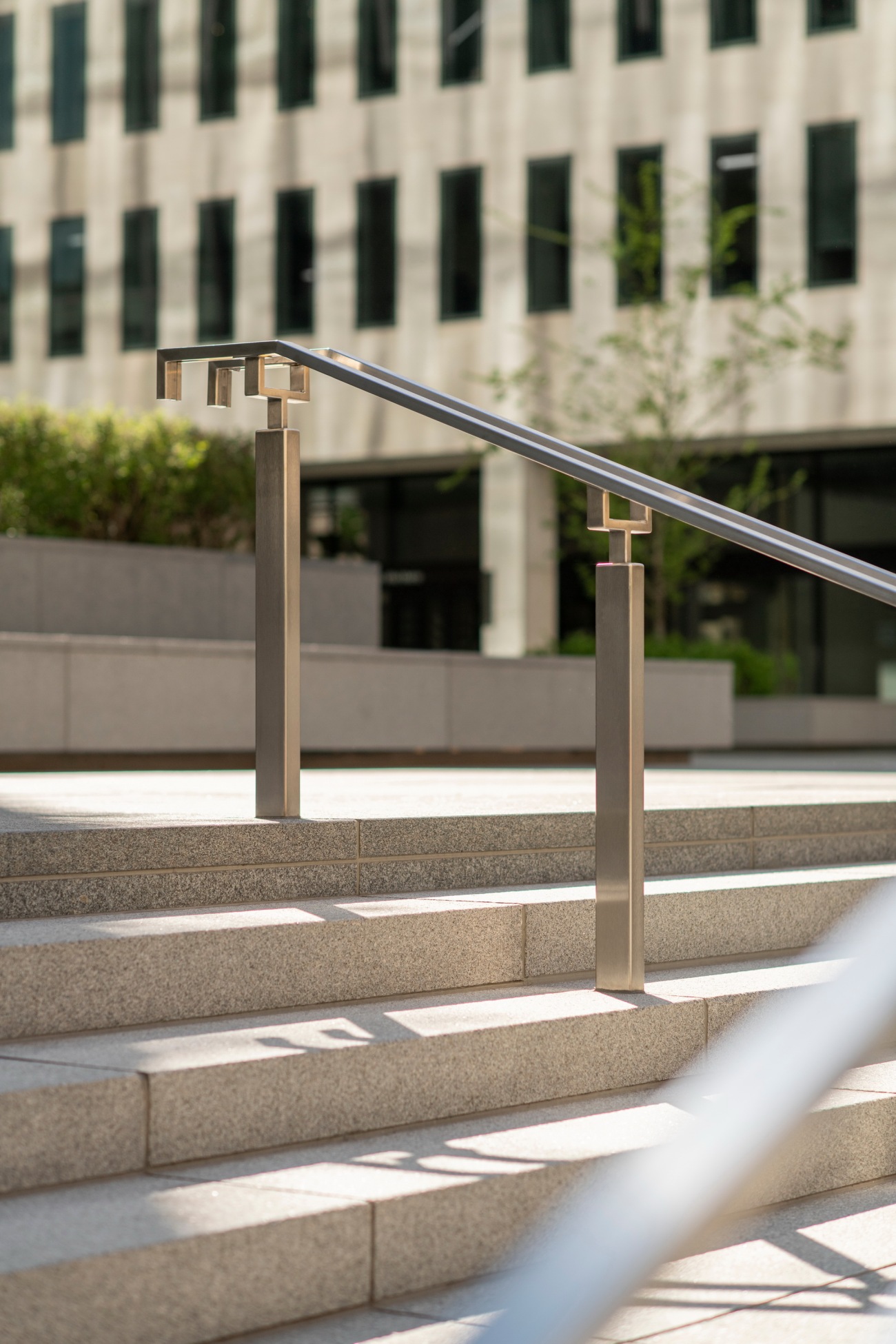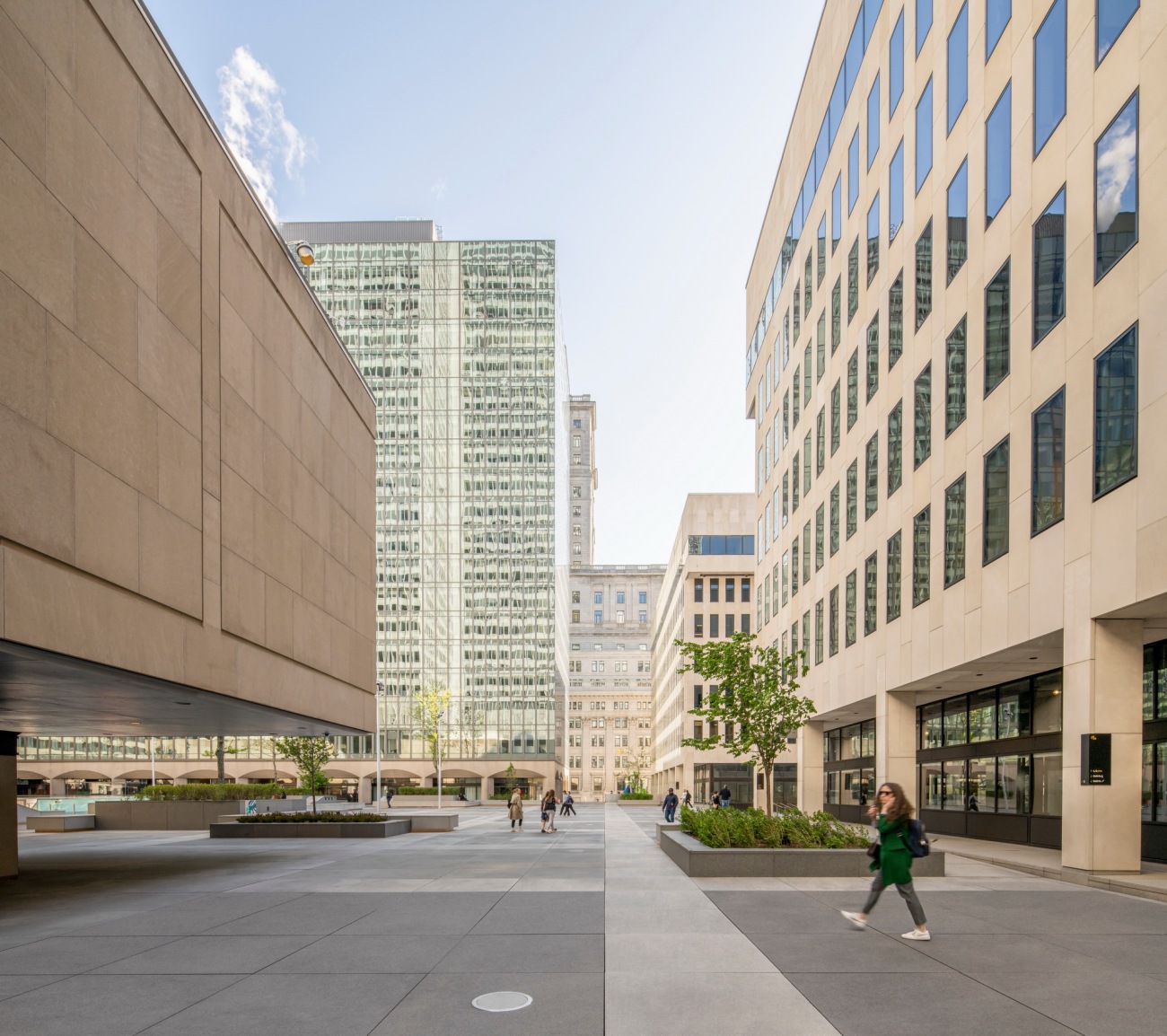| 公司: | Sid Lee Architecture | 类型: | 景观 |
|---|---|---|---|
| 地区: | 加拿大 | 标签: | 公共建筑 | 公共空间 |
Sid Lee Architecture和Menkès Shooner Dagenais LeTourneux Architectes在蒙特利尔市中心展示了新的滨海大道PVM。该项目由Sid Lee Architecture设计,并与Menkès Shooner Dagenais LeTourneux Architectes合作执行,将这个现代公共广场提升到与世界大都市相称的高度。
在Ivanhoé Cambridge投资的推动下,重新开发了从Robert-Bourassa大道到Mansfield街,从René-Lévesque大道到Cathcart街的所有公共空间,这是重修Ville Marie广场的更广泛计划的一部分,突出了这一标志性空间作为重要的聚会场所。
Sid Lee Architecture and Menkès Shooner Dagenais LeTourneux Architectes reveal the new Esplanade PVM in the heart of downtown Montreal. Designed by Sid Lee Architecture, and executed in collaboration with Menkès Shooner Dagenais LeTourneux Architectes, the project raises this modern public square to the stature worthy of a world metropolis.
Part of a broader plan to revitalize Place Ville Marie driven by investment from Ivanhoé Cambridge, the redevelopment of all public spaces, from Robert-Bourassa Boulevard to Mansfield Street, and René-Lévesque Boulevard to Cathcart Street, highlights this iconic space as an important gathering place.
▽项目概况,Project Overview.
回归本源A Return to Roots
2014年,新的滨海艺术中心以正式和历史分析阶段开始,在某些方面唤起了怀旧之情,回归本源。它反映了 Sid Lee Architecture 重申公共广场重要性的愿望,同时忠于该概念的目标和指导方针。
Sid Lee Architecture 的建筑师兼首席合伙人 Jean Pelland 解释说:“我们想为滨海艺术中心提出一个全新的愿景,它保留了上次改造中的一些自然元素,同时恢复了其原始的形式品质和矿物质。”
Kicking off in 2014 with a phase of formal and historical analysis, in some ways the new Esplanade evokes a sense of nostalgia, a return to the source. It reflects Sid Lee Architecture's desire to reaffirm the importance of the public square, while staying true to the objectives and guidelines of the concept.
“We wanted to propose a refreshed vision for the Esplanade, one which preserved some of the natural elements from its last transformation, while restoring its original formal qualities and minerality,” explains Jean Pelland, Architect and Principal Partner at Sid Lee Architecture.
▽20世纪80年代最后一次重建,The last reconstruction in the 1980s.
最后一次重建是在20世纪80年代进行的,目的是让滨海广场看起来像一个大花园。这一次,该公司回到了空间的主要功能和美学,从现代主义原则中汲取影响,如无限网格和城市平台的自由流动。设计方法和最终的概念被提交给著名的原始设计师Henry N. Cobb,他表达了对这一新愿景的热情。
The last redevelopment was carried out in the 1980s to give the Esplanade the appearance of a large garden. This time, the firm returned to the space’s primary function and aesthetics, drawing its influences from modernist principles like the infinite grid and the free flow of the urban platform. The approach and final concept were presented to the famous original designer, Henry N. Cobb, who expressed enthusiasm for this new vision.
连续性原则Principle of Continuity
使滨海艺术中心在视觉上和物理上都可以访问:这一原则指导了建筑公司提出的再开发的各个方面。“我们从一开始就接受重建公共广场需要一些真正的技巧,而主要目标是保持空间连续性,同时增加创造社交场所的机会,”Jean Pelland 说。
基于这种连续性原则,建筑师们将他们的方法建立在先前存在的超大平板的想法之上,建筑物可以简单地放置在平板上。这种布局的矿物性和流动性还有其他好处;开放空间有利于举办活动,并偶尔为新的公共激活项目进行改造。
细节的简洁性使空间易于阅读。它消解了商业区域、社会区域和文化区域之间的界限。因此,翻新的滨海艺术中心捕捉了城市环境的丰富活力,并将街道生活与建筑物内部联系起来。
Making the Esplanade visually and physically accessible: this principle guided every aspect of the redevelopment proposed by the architectural firm. “We accepted from the outset that recreating the public square was going to require some real finesse, and that the primary objective was to preserve spatial continuity, while multiplying opportunities to create places of socialization," says Jean Pelland.
Based on this principle of continuity, the architects founded their approach on the preexisting idea of an oversized slab on which buildings are simply placed. The minerality and fluidity of this layout hold other benefits; the open spaces are conducive to hosting events and the occasional transformation for new public activation programs.
The simplicity of detail makes the space easy to read. It dissolves the boundaries between the business district, social areas, and cultural areas. The renewed Esplanade thus captures the abundant dynamism of its urban environment and links life on the street to the interior of the buildings.
▽滨海艺术中心公共广场,Esplanade public garden.
▽楼梯细节,Staircase details.
开放的滨海艺术中心Opening the Esplanade
这一重大的修复项目将蒙特利尔市中心的标志性空间恢复为该市文化和商业生活中心的优越位置。通过重新配置与地下网络的连接、购物中心的现代化和入口大厅的翻新,所实施的建筑响应比以往任何时候都更能将其与城市生活联系起来。
This major revitalization restores an emblematic downtown Montreal space to a privileged place at the heart of the city’s cultural and commercial life. Through the reconfiguration of its connection to the underground network, the modernization of its shopping mall, and the renovation of the entrance halls, the architectural response implemented connects it more than ever to urban life.
改造中最重要的是重新开放玛丽广场(Place Ville Marie)的周边。建筑周围排列着楼梯,公共广场吸引了街道和室内之间的流通。“现在,Esplanade PVM 通过巨大的楼梯与McGill学院大道的中轴线相连,开辟了皇家山的壮丽景色,”Menkès Shooner Dagenais LeTourneux Architectes 的建筑师兼高级合伙人 Yves Dagenais 说。这个楼梯,包括一个嵌入式入口坡道,创建了一个直接的联系,确保街道和升高的公共空间之间的流动。以前有利于车辆过路处的地下停车场的大入口被移到一边,以欢迎步行交通。
Paramount in the transformation is the reopening of the periphery of Place Ville Marie. Lined with stairs around the buildings, the public square invites circulation between the street and the interior. “Now linked to the central axis of McGill College Avenue by a monumental staircase, the Esplanade PVM opens up a remarkable view on Mount Royal,” says Yves Dagenais, architect and senior partner at Menkès Shooner Dagenais LeTourneux Architectes. This staircase, including an embedded access ramp, creates a direct link that ensures fluid movement between the street and the raised public space. The large entrance to the underground parking lot that previously favored vehicular crossings was moved aside to welcome foot traffic.
滨海艺术中心曾经被四个朴素的天窗点缀,现在拥有北美最大的水平玻璃结构之一。这个玻璃亭子产生的反光效果让人想起现代主义时代公共广场典型的水池。这座令人印象深刻、看似漂浮的结构可直接通往位于地下画廊中心的四季Cathcart Restaurants&Biergarten餐厅。“这座非凡的16英尺高的玻璃亭由18根玻璃梁支撑。它不仅容纳了美食广场,而且还精美地模糊了内外的界限,为公共广场的生活做出了贡献,”Yves Dagenais 补充道。
Once punctuated by four modest skylights, the Esplanade now boasts one of the largest horizontal glass structures in North America. The reflective effect created by this glass pavilion is reminiscent of the water basins typical of the public squares of the modernist era. This impressive, seemingly floating structure provides direct access to the 4-season Cathcart Restaurants & Biergarten in the heart of the underground gallery. "The extraordinary 16-foot-high glass pavilion is supported by 18 glass beams. It not only houses the food court, but also beautifully blurs the boundaries between inside and outside, contributing to the life of the public square,” adds Yves Dagenais.
▽通往地下画廊的玻璃亭,Glass pavilion leading to underground gallery.
回归统一的物质性渗透到整个建筑景观中,将公共区域和建筑物聚集在一起。材料的选择和形式的安排重申了通用布局的理念,这是 Place Ville Marie 的基本概念。即使在滨海艺术中心的瓷砖上也很明显,这个网格在视觉上将塔楼连接起来,并强调了这个项目对城市中心的重要性。
The return to a uniform materiality permeates the entire architectural landscape, bringing together public areas and buildings. The choice of materials and the arrangement of forms reaffirm the idea of a universal layout, a foundational concept of Place Ville Marie. Evident even in the Esplanade’s tiling, this grid links the towers visually and underscores the importance of the character of this project to the heart of the city.
▽玻璃亭细节,Glass Pavilion Details.
公共广场现在通过McGill学院轴线提供与皇家山的直接视觉和物理连接。这种联系通过 CCxA 的巨大装置“指环”得到加强,它构成了象征性的景观。更新后的滨海大道PVM 是它曾经版本的新升级,现在更容易导航、社交和享受。
The public square now offers a direct visual and physical connection to Mount Royal through the McGill College axis. This connection is enhanced by the Ring, a monumental installation by CCxA, that frames the emblematic view. The renewed Esplanade PVM is a refreshed version of what it once was, now easier to navigate, socialize in, and enjoy.
▽广场中心的“指环”装置,The 'Ring' device in the center of the square.
地点:Place Ville Marie
客户:Ivanhoé Cambridge
面积:150 000 平方英尺
概念与愿景:Sid Lee Architecture
执行:Consortium Sid Lee Architecture | Menkès Shooner Dagenais LeTourneux Architectes
总承包商:Pomerleau
结构工程师:NCK Inc.
机电工程师:Bouthilette Parizeau (BPA)
照明顾问:Lightemotion
项目管理:JAJKO
玻璃专家:Seele 和 Techniverre
摄影师:David Boyer
更新日期:2023-04-06 15:52:17
非常感谢 Sid Lee Architecture 带来的精彩项目, 查阅更多Appreciations towards Sid Lee Architecture for sharing wonderful work on hhlloo. Click to see more works!





